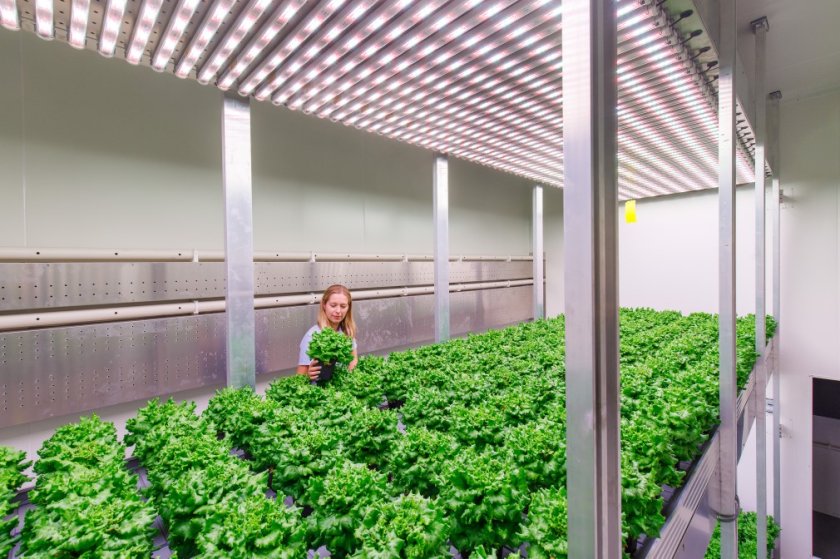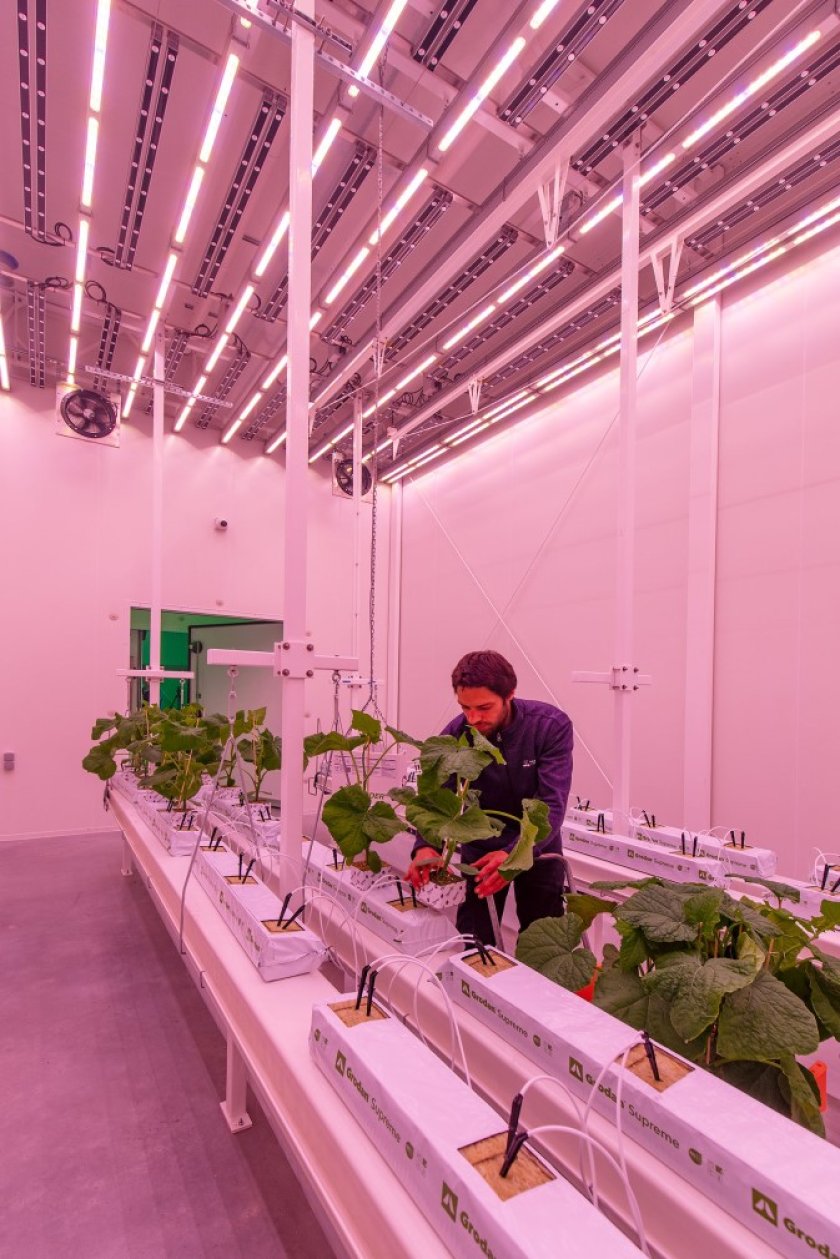
Project
Implications of Vertical Farming for greenhouse horticulture
Global developments are a rapidly growing population, an increasing proportion of people living in the cities, and an increasing demand for healthy and fresh food. In order to meet these developments, local production of high-quality food is needed. By growing crops in multi-layer systems, sustainable, efficient and fully controlled cultivation can be done on a relatively small surface. In this way Vertical Farming can meet the needs of a growing world population.
Design of closed cultivation systems
In a Vertical Farm, the (free) energy of the sun is not used, so the electricity consumption for lighting and cooling is high. Researchers from the Greenhouse Horticulture business unit of Wageningen University and Research are working on the further development of indoor cultivation systems, so that they can be specifically designed for and applied in different climate zones around the world. Our research defines the most important factors that improve the utilisation of natural resources, such as energy (resource use efficiency) and works on the design of the construction of Vertical Farms. This should lead to an improved technical and financial feasibility of Vertical Farms.

Unique facility
In order to answer the questions regarding the most suitable crop choice, climate and cultivation strategy in a Vertical Farm, the business unit Greenhouse Horticulture has built a unique Vertical Farming facility on its site in Bleiswijk. This Vertical Farm facility consists of four cultivation cells, two multi-layer cells and two cells that are suitable for the cultivation of high-wire crops. Unique to this facility is that the cells are closed and airtight, so that in situ CO2 uptake of the crop can be quantified. This allows optimization of the climate to the needs of the crop.

Application in greenhouse horticulture
In greenhouse horticulture, we make optimal use of sunlight to grow vegetables, flowers and plants in an efficient and sustainable way. However, because the outdoor conditions can vary, the climate conditions in a greenhouse are also fluctuating. For the cultivation of high-value crops such as raising young plants, a Vertical Farm can therefore be a useful addition to the greenhouse. The newly built Vertical Farm can be used to develop new knowledge to bring greenhouse cultivation to a next level by creating more insight in the effects of environmental conditions on growth, development and uniformity of the crop.
- Unfortunately, your cookie settings do not allow videos to be displayed. - check your settings
- Unfortunately, your cookie settings do not allow videos to be displayed. - check your settings
- Unfortunately, your cookie settings do not allow videos to be displayed. - check your settings
- Unfortunately, your cookie settings do not allow videos to be displayed. - check your settings